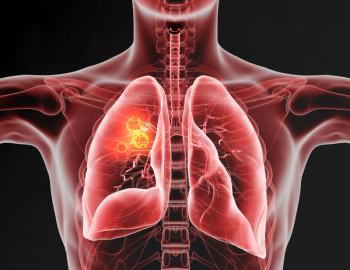
Low Back Pain: Causes, Management, and Prevention Strategies
Pharmacists can play an important role in medication management, and prevention strategies for low back pain.
Approximately 80% of individuals experience low back pain at some point in their lives.1 In fact, it is considered the most common cause of job-related disability.2
Acute back pain is a brief episode of pain that occurs suddenly and generally resolves on its own with self-care. Subacute low back pain lasts 4-12 weeks, while chronic back pain persists for 12 weeks or more.3 Pharmacists can play an important role in medication management, and prevention strategies for low back pain.
Low Back Pain Causes
Sprains and strains are the most common causes of acute back pain.1 Sprains are caused by overstretching or tearing ligaments, and strains are tears in tendon or muscle. Twisting or lifting something improperly, lifting items that are too heavy, or overstretching can cause sprains, strains, and back muscle spasms that can be painful. There are a variety of other causes of low back pain (Table). The following conditions that can cause back pain symptoms usually require medical attention: infections, tumors, abdominal aortic aneurysms, and kidney stones.1
Table: Low Back Pain Causes1,2
Management
The American College of Physicians (ACP) has developed clinical practice guidelines for treating low back pain.4 Nonpharmacologic treatment is recommended first line for managing acute or subacute low back pain, since it will usually resolve over time regardless of the therapy. Options include superficial heat, massage, acupuncture, or spinal manipulation.4 Moderate evidence demonstrated that a heat wrap improves pain relief compared with placebo.4 Low quality evidence revealed that acupuncture slightly increased the chance of improvement compared with nonsteroidal anti-inflammatory drugs (NSAIDs).4 Massage and spinal manipulation may offer small improvements in pain relief. If pharmacologic therapy is preferred for acute back pain, then NSAIDs or skeletal muscle relaxants should be used. Evidence showed that acetaminophen was not effective at improving pain outcomes compared to placebo.4 Additionally, systemic steroids were not effective for treating acute back pain.
Patients experiencing chronic low back pain should first try nonpharmacologic therapy with the following treatments shown to provide benefit: exercise, multidisciplinary rehabilitation, acupuncture, or mindfulness-based stress reduction.4 Nonpharmacologic treatment options with low-quality evidence include tai chi, yoga, and laser therapy.4 Patients that do not respond to nonpharmacologic treatment options can consider NSAIDs as first-line therapy, and tramadol or duloxetine as second-line therapy. Opioids should be used last-line, and only if all other treatment options have failed due to the risk of addiction and accidental overdose.
Pharmacists can play an important role in educating patients regarding back pain treatment options, identifying drug interactions, and counseling about the risk of adverse effects. Use of NSAIDs can put patients at an increased risk of developing stomach ulcers so it is important to use these as short-term treatment options. They can also cause kidney dysfunction and fluid retention. Therefore, patients’ medical histories should be thoroughly assessed for underlying health conditions. Patients on anticoagulants and NSAIDs can be at an increased risk of bleeding. Skeletal muscle relaxants can cause central nervous system adverse effects such as sedation so they should be taken in the evening if possible. Sudden discontinuation of duloxetine can cause withdrawal symptoms, so it is important to gradually reduce the dose before stopping treatment.
Low Back Pain Prevention Strategies
Low-impact exercises such as speed walking, swimming, or stationary bike riding 30 minutes a day can help increase muscle strength and flexibility and maintain back health. It is important to always stretch before exercise or other strenuous physical activity. Work surfaces should be at a comfortable height, and chairs should have good lumbar support. It is important to avoid lifting objects that are too heavy. Counsel patients to sleep on a firm surface to promote back health. Lifting from the knees with stomach muscles pulled in can help to prevent back injuries.1 Comfortable low-heeled shoes should also be worn, as high-heeled shoes are associated with low back pain. Educate patients who smoke that it can reduce blood flow to the lower spine, and cause spinal disc degeneration. Pharmacists can play an important role in smoking cessation education.
Jennifer Gershman, PharmD, CPh is a drug information pharmacist and Pharmacy Times contributor residing in South Florida.
References
- National Institute of Neurological Disorders and Stroke. Low back pain fact sheet. https://www.ninds.nih.gov/Disorders/Patient-Caregiver-Education/Fact-Sheets/Low- Back-Pain-Fact-Sheet. Accessed June 18, 2018.
- Cleveland Clinic. Back pain basics. https://my.clevelandclinic.org/health/diseases/9516- back-pain-basics. Accessed June 19, 2018.
- Hooten WM, Cohen SP. Evaluation and treatment of low back pain: a clinically focused review for primary care specialists. Mayo Clin Proc. 2015;90(12):1699-1718.
- Qaseem A, Wilt TJ, McLean RM, et al. Noninvasive treatments for acute, subacute, and chronic low back pain: a clinical practice guideline from the American College of Physicians. Ann Intern Med. 2017;166(7):514-530.
Newsletter
Stay informed on drug updates, treatment guidelines, and pharmacy practice trends—subscribe to Pharmacy Times for weekly clinical insights.















































































































































































































